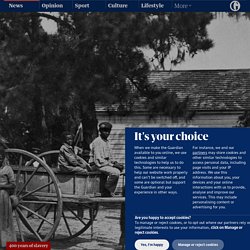

Book Summary. Set in the fictional community of Bayonne, Louisiana, in the late 1940s, A Lesson Before Dying tells the story of Jefferson, a twenty-one-year-old uneducated black field worker wrongfully accused and convicted of the robbery and murder of a white man, and sentenced to death by electrocution.

At his trial, Jefferson's court-appointed defense attorney argues that Jefferson lacks the intelligence to plan a robbery, and that, even if he had been involved in the killing, sentencing him to death would be like putting a hog in the electric chair. In spite of this so-called defense, the all-white jury finds Jefferson guilty. To compound the horror of his situation, Jefferson internalizes the attorney's racist depiction of him as a dumb animal.
Determined that Jefferson will die with dignity, his godmother ("nannan"), Miss Emma, turns to Grant Wiggins, a black teacher at the local plantation school, and asks him to teach Jefferson to be a man. African Americans (people) - Videos, Images and Audio. Ring in the new year with a Britannica Membership.

Truth Needs a Champion. Will it be You? The Britannica mission is supported by advertising – please consider whitelisting us or making a donation to ensure Britannica can continue providing trusted content for all to enjoy. DonateSupport Britannica WhitelistDisable Ad Blocker Continue to site|Need help? Powered By. DuSable Museum of African American History, a Black history museum. [Music in] NARRATOR: Suppose there are no objects.

What then? ELAINE HEUMANN GURIAN: The history of African Americans in our country has whole chunks of their history not available in objects. Available in story form, available in memory, available in song, but not in objects. NARRATOR: That didn't stop Margaret and Charles Burroughs from starting a black history museum in their home, just as the civil rights movement was revving up. MARGARET BURROUGHS: In 1961, when we opened up in my living room, we started out with what we had, because my husband, Charles, and I, we had collected things from Africa. Now there are over 125 black history museums throughout the country—Detroit, New York, St.
LONNIE BUNCH: Margaret Burroughs clearly opened doors wide for people like me. [Music out] 400 years since slavery: a timeline of American history. Many Americans’ introduction to US history is the arrival of 102 passengers on the Mayflower in 1620.

But a year earlier, 20 enslaved Africans were brought to the British colonies against their will. As John Rolfe noted in a letter in 1619, “20 and odd negroes” were brought by a Dutch ship to the nascent British colonies, arriving at what is now Fort Hampton, then Point Comfort, in Virginia. Though enslaved Africans had been part of Portuguese, Spanish, French and British history across the Americas since the 16th century, the captives who landed in Virginia were probably the first slaves to arrive into what would become the United States 150 years later.
Four hundred years on, the captives’ arrival has informed nearly every major moment in American history, even if that history has been framed around anyone but Africans and African Americans. In 1992, Toni Morrison told the Guardian: “In this country, American means white. Eight of the first 12 US presidents were slave owners. Black History Milestones: Timeline. By 1900, the unwritten color line barring blacks from white teams in professional baseball was strictly enforced.

Jackie Robinson, a sharecropper’s son from Georgia, joined the Kansas City Monarchs of the Negro American League in 1945, after a stint in the U.S. Army (he earned an honorable discharge after facing a court–martial for refusing to move to the back of a segregated bus). His play caught the attention of Branch Rickey, general manager of the Brooklyn Dodgers, who had been considering bringing an end to segregation in baseball. Rickey signed Robinson to a Dodgers farm team that same year and two years later moved him up, making Robinson the first African–American player to play on a major league team. Robinson played his first game with the Dodgers on April 15, 1947; he led the National League in stolen bases that season, earning Rookie of the Year honors.